
views
X
Research source
Using a Coccyx Cushion
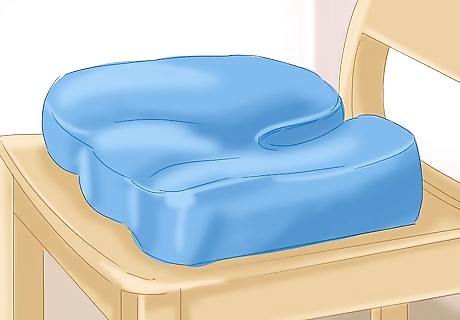
Use the cushion everywhere. Coccyx cushion treatment will be most effective if you can use the cushion in the car, at home, at work and everywhere else you need to sit down. You can purchase several inexpensive cushions or opt for one that can travel with you and be used everywhere. Consistency is key to treating your tailbone pain with a coccyx cushion. Be aware that one cushion may not be suitable for all scenarios. For example, a cushion may help while you are sitting at your desk, but it may not be as effective while you are driving. Try using a cushion in different situations to see when it provides the most benefit.
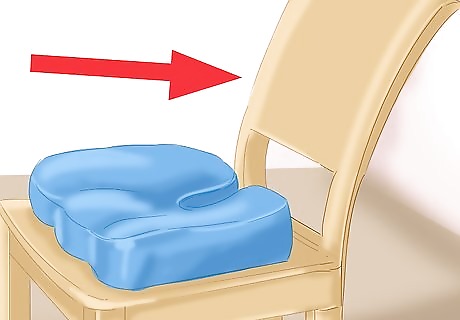
Sit in a chair with a back. Use the coccyx cushion in a chair with a back that will give you extra support. The cushion naturally helps improve your posture by slightly elevating your hips, and sitting in a chair with a back will help you sit up straight and eliminate pressure on your spine and pelvis. When using a cushion on a chair that is a comfortable height for you, your thighs may be slightly higher than usual. To offset this difference, try using a footstool to make sure your lower body is still in a comfortable position. If the chair is adjustable, then you can also adjust the height of the seat to make yourself more comfortable.
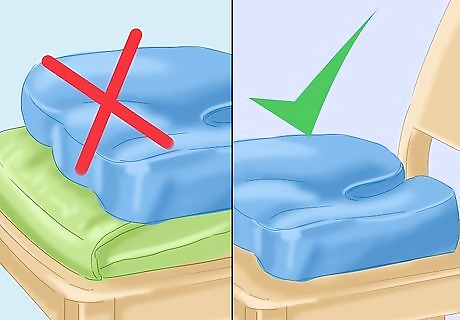
Place the coccyx cushion directly on the seat. Do not use a coccyx cushion with other cushions. Adding extra pillows or cushions will cause you to sit unevenly and in turn, distribute your weight and pressure unevenly, which is unhealthy for your back. The placement of the cushion on the seat can either be flat or slightly sloping. This is most people's preference. If you need extra height, purchase a thicker coccyx cushion instead of adding extra pillows or padding. If you are putting the cushion on a very soft seat, like couch or plush chair, put a rigid board under the cushion for support.

Add ice packs or hot packs for added relief. You can add flat ice or hot packs to your coccyx cushions for hot or cold therapy. Wrap the packs in towels and place one on either side of the cut-out area in the cushion. Some cushions may come with gel insert that you can warm up or freeze before reinserting them and using the cushion. Consult with your physician about whether the effects of ice or hot packs would be beneficial for you.
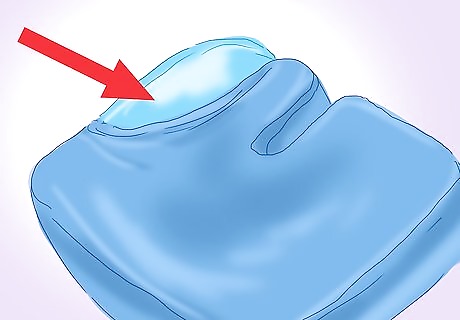
Keep the cushion clean. Try to get a coccyx cushion with a removable cover that can be machine washed. This will help you keep your cushion is clean and sanitary.
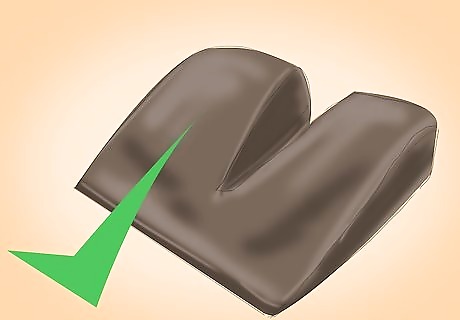
Upgrade your cushion if necessary. If the coccyx cushion isn't providing sufficient relief to your tailbone pain, then try a different one. For example, you use a coccyx cushion that is made of soft foam and find that it’s not alleviating the pain, upgrade to a cushion made of firmer, denser foam for more support. Cushioning is an individual need, so your cushion needs will be unique.
Getting a Coccyx Cushion

Know what a coccyx cushion is and does. A coccyx cushion (sometimes called a wedge cushion) is a U-or V-shaped pillow that protects the coccyx from uncomfortable pressure. Some cushions are also formed as a wedge. The U- or V-shape, in comparison with the circular doughnut cushions, often provide more comfort for people with tailbone pain. These cushions can also be used to provide comfort for those with hemorrhoids (piles) pain, prostate disorders, pilonidal cysts or degenerative bone disease. Doctors frequently recommend that patients use a coccyx cushion after back surgery to reduce pressure on the spinal column and tailbone. Coccyx cushions are also often used to help relieve pain from other chronic pain conditions and inflammatory pain or to relieve pressure on the back and pelvic area during pregnancy. Coccyx cushions differ from ring or doughnut cushions, which have a hole in the middle, and help reduce pressure on the anal and prostate region in cases of hemorrhoids and swollen prostate.
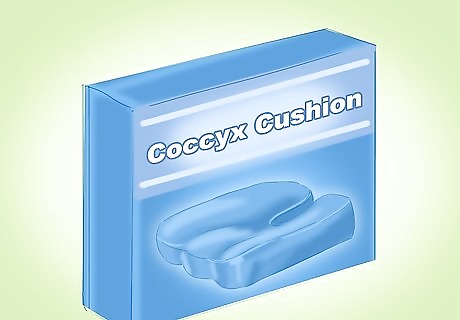
Buy a coccyx cushion. You can buy a coccyx cushion at a local surgical supply store or pharmacy. You can also search online using terms like “coccyx cushion”, “tailbone cushion” and “tailbone wedge cushion”. Online sources can be less expensive, but the advantage to using a local dealer is that you can try different cushions to see which might work best for you. Do some research in advance. There are multiple things to consider when buying a coccyx cushion. Some are softer and thicker than others, some are inflatable, and others have washable covers. There are also cushions using different materials as padding and some may be more comfortable for you than others. Some of the materials used are memory foams, gels, semi-liquid gels, or other materials. Talk to your physician or orthopedic specialist to see if they have specific recommendations.

Consider making your own coccyx cushion. If you cannot find a comfortable option in stores, then you can try making your own coccyx cushion. Most coccyx cushions are just regular cushions with a small opening on one side. You can get a large piece of memory foam or a memory foam pillow and cut out a small wedge on one side. Other creative options include duct taping together segments of a pool noodle, using a neck pillow, or filling a long sock with rice and bending it into a "U" shape.
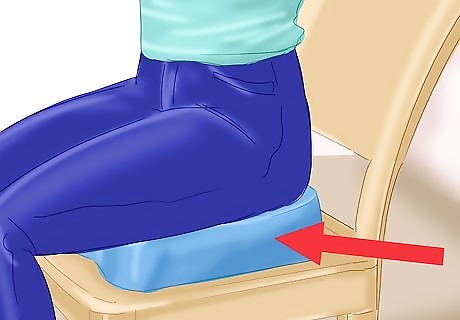
Choose a cushion that feels comfortable. Coccyx cushions are made in varying levels of thickness and firmness and it’s important that you select a coccyx cushion that’s comfortable for you. Squeeze the cushion in your hand to feel how firm it is. This will give you an idea of how it will feel to sit on the cushion and how much support it will give you. Coccyx cushions are also made with gel inserts. Gel inserts can help provide a softer form of cushioning and will conform better to the particular contours of your body. Some gel inserts in coccyx cushions can be removed to be warmed or frozen for hot or cold therapy.

Try coccyx cushions with and without the cut-out. Some coccyx cushions are U-shaped and have a cut-out area to help relieve pressure on the spine and tailbone. Many people find more relief with these cushions, so try the solid ring cushions and the cut-out version to determine which kind is better for your needs.
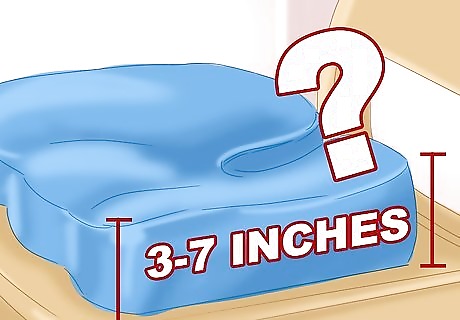
Make sure your coccyx cushion is the appropriate thickness. Coccyx cushions can be anywhere from 3 to 7 inches (7.6 to 17.8 cm) thick. Most people use the 3-inch thickness, but a thicker cushion can be beneficial to heavier users. Ask your physician or the local dealer about what size thickness is ideal for you, given your particular body type.












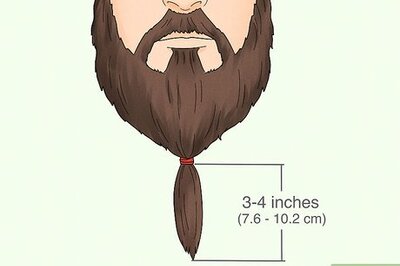



Comments
0 comment